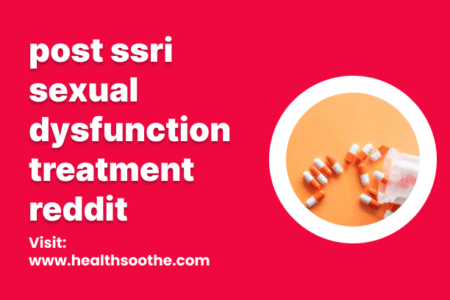The news of expecting a baby is, undoubtedly, exciting for every parent. As soon as a parent receives this good news, they start praying, planning, and adapting to the new lifestyle.
After all, every parent hopes and expects the newborn baby to bring endless joy and happiness to the family. For this reason, parents begin their journey by seeking the right medical help to do things the right way.
However, unfortunately, medical malpractice is not new and can happen to anyone. The worst medical accidents usually occur during birth, leading to birth injuries.
Birth injury refers to any damage a baby suffers before, during, or right after the delivery. Some birth injuries are mild and can resolve with time.
However, specific birth injuries are more severe, causing permanent mental or physical damage to the baby. And while we wish no parent has to see their newborn suffer from any harm, learning about different birth injuries is imperative for all parents.
Thus, read on below common seven birth injuries:
1. CEREBRAL PALSY
According to CDC, roughly 3 in every 1,000 children may suffer from this disorder. In this disorder, the damage occurs to the developing brain during birth and affects muscle movement or coordination.
Parents can start noticing the signs of cerebral palsy during toddlerhood, such as abnormal posture, stiffness in limb, unsteady walking, etc.
However, the symptoms may vary. Other symptoms of CP include difficulty speaking, tremors, excessive drooling, lack of muscle balance, etc.
Unfortunately, there is no cure for this injury, and the child may have to go through therapy for a lifetime. Undeniably, it can cause emotional, financial, and physical stress to the parents.
So, if your child has sustained this preventable birth injury, consider filing a cerebral palsy lawsuit to hold the medical staff accountable and get the rightful compensation.
2. CEPHALOHEMATOMA
Cephalohematoma refers to a birth injury in which blood accumulates between the baby’s outer skull and underneath the scalp. It usually occurs when there is pressure on the baby’s head during labor, causing damage to the blood vessels in the scalp.
As a result, a soft bump appears on the back of the head, sometimes soon after the birth, but other times it may take a few hours or days to grow in size and be visible.
Apart from the bulge, other symptoms of this injury are jaundice, infection, or anemia. Mostly, cephalohematoma goes away without any treatment within weeks or months.
3. BRACHIAL PLEXUS INJURY
The brachial plexus refers to nerves that control the arm’s muscles. This network of nerves goes from the spinal cord to the shoulders, arms, and hand.
So, the baby may suffer from brachial plexus injury whenever there is an injury to this group of nerves due to stretching, compressing, or ripping apart of these nerves because of a difficult delivery.
Although, most brachial plexus injures are temporary. Yet, in some unfortunate cases, the injuries may be permanent. Common symptoms of this injury may include numbness, burning or stinging sensation, muscle weakness, or worst, paralysis.
4. HYPOXIC-ISCHEMIC ENCEPHALOPATHY (HIE)
Hypoxic-ischemic encephalopathy is a brain injury in which a baby’s brain does not receive sufficient oxygen or blood flow during the birthing process.
The severe birth injury also refers to perinatal asphyxia. When the umbilical cord between mother and fetus, which allows blood flow, is cut off, the infant suffers from HIE.
Other common factors contributing to this life-threatening injury include long abnormal labor, placental bleeding, wrong fetal position, etc.
Medical professionals usually grade this injury as mild, moderate, or severe. If the damage is mild or moderate, the baby sustains some long-term disabilities. However, if it becomes severe, the injury may cause the death of the newborn.
5. CAPUT SUCCEDANEUM
In this birth injury, the infant’s scalp or portion of scalp swells during labor or delivery. When the medical practitioners squeeze and push the newborn’s head due to a long, difficult struggle, it can give rise to swelling, resulting in caput succedaneum.
Sometimes the employment of forceps and vacuum suction tools during delivery can cause swelling. However, the symptoms of this birth injury are not usually dangerous. Some typical symptoms other than swelling include puffiness, softness on the swelling area, or bruising.
Often, the swelling goes away after a few hours or days without any treatment. However, some babies undergo complications in rare cases. These complications can cause infant jaundice.
6. FACIAL PARALYSIS
Another severe birth injury that requires immediate medical intervention is facial paralysis. If the newborn suffers from excessive pressure on the facial nerves just before delivery, it can result in facial paralysis.
Sometimes this facial injury occurs suddenly; however, it may also take some time in a few cases. Some common factors that give rise to this birth injury are the large size of the baby, long pregnancy, or epidural anesthesia usage.
The symptoms of facial paralysis may include noticeable uncontrollable drooling, difficulty feeding, inability to blink, speech problem, etc.
FINAL THOUGHTS
According to the Centers for Disease Control and Prevention (CDC), each year every one in 33 babies is a victim of medical malpractice and suffers from birth injuries in the United States.
No wonder the death of a newborn baby is devastating for every parent. And although not every infant born dies because of birth injuries, the child has to live with lifelong complications because of medical wrongdoings that could have been prevented.
So, if you think your baby has sustained a birth injury, hire the right attorney for your case and get the compensation your baby deserves.





